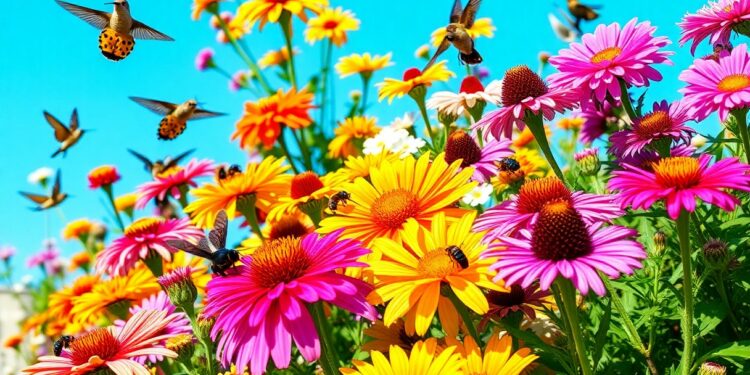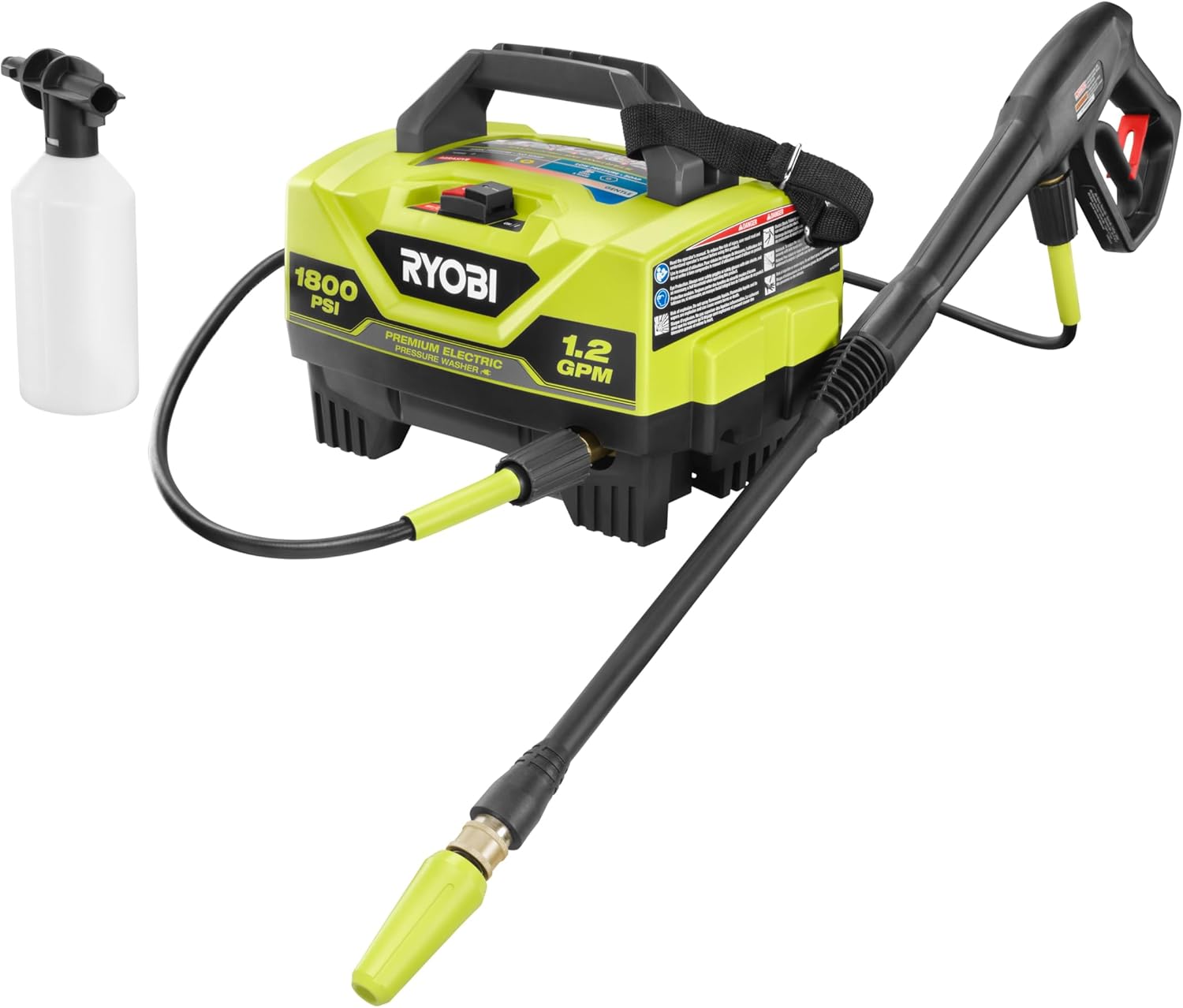You may have noticed a buzz in the gardening world lately, and it’s not just from the bees! Pollinator gardens are becoming increasingly popular, and for good reason. These vibrant spaces not only provide a welcoming habitat for butterflies, bees, and other pollinators, but they also enhance the beauty of your outdoor space. By joining this trend, you can play a part in supporting local ecosystems while enjoying the many benefits of a flourishing garden. So, let’s dig into what a pollinator garden is all about and how you can create one for yourself!
The Rise of Pollinator Gardens – A Trend Worth Joining
A pollinator garden is a vibrant green oasis designed to attract and support imperative pollinators like bees, butterflies, and hummingbirds. By incorporating a variety of flowering plants, these gardens play a vital role in maintaining biodiversity while also beautifying your outdoor space. They are easy to create and can be tailored to fit any size yard or balcony, making it a wonderful way for you to contribute to the environment while enjoying nature’s beauty right at your doorstep.
Defining Pollinator Gardens
For those new to the concept, pollinator gardens are specialized spaces filled with plants that provide food, shelter, and habitat for pollinators. These gardens include a mix of native flowers, shrubs, and trees that bloom at different times through the seasons, ensuring a continuous source of nectar and pollen for your local pollinators. By creating and maintaining these gardens, you can help support these vital creatures while enhancing your landscape.
Key Plants for Pollinators
On your journey to establish a pollinator garden, selecting the right plants is imperative. Native flowering plants are particularly beneficial, as they have evolved alongside local pollinators and typically provide the best nutrition for them. Variety is also important; incorporating plants that flower at different times ensures that there’s always food available for pollinators throughout the seasons.
Considering your location and climate is key to choosing plants that thrive in your specific environment. Opt for a mix of blossoms in various colors, shapes, and sizes to attract different types of pollinators. Think about adding sunflowers, milkweed, echinacea, and bee balm, as they are all inviting options. Additionally, plants like lavender and marigolds not only bring beauty to your space but also provide imperative resources for your buzzing friends. By prioritizing native species and diverse blooms, you’ll be creating a welcoming haven for pollinators.
The Importance of Pollinators
Some might not realize how vital pollinators are for maintaining healthy ecosystems. These amazing creatures, including bees, butterflies, and hummingbirds, play a pivotal role in plant reproduction. By transferring pollen from one flower to another, they help plants produce fruits, seeds, and new plants, ensuring biodiversity and stability in natural environments. When you support pollinator gardens, you are nurturing a system where all living beings, including yourself, thrive in a balanced setting.
Why They Matter for Ecosystems
Behind the scenes, pollinators are vital players in maintaining the health of your local environment. They contribute to the growth of diverse plant species, which in turn support a myriad of other organisms. Without them, many plants would struggle to reproduce, leading to diminished habitats and a decline in wildlife populations. By creating spaces for these important creatures, you help foster a flourishing ecosystem that benefits nature and all who enjoy it.
Pollinators and Our Food Supply
Pollinators are central to the production of a vast array of foods that you enjoy daily. They are responsible for helping to grow many fruits, vegetables, and nuts by ensuring that plants can produce seeds and fruit. If you love your fresh produce, recognizing the role of pollinators is vital!
Supply chain concerns aside, it’s vital to acknowledge how directly pollinators impact your meals. Many crops you depend upon—think apples, blueberries, or even almonds—rely heavily on these hardworking creatures. Supporting pollinator gardens in your area doesn’t only enhance your local beauty; it actively contributes to a stable and abundant food supply for you and your community! By joining the pollinator garden trend, you’re fostering a nurturing environment that benefits both nature and your dinner table.
Getting Started with Your Own Pollinator Garden
While entering into the world of pollinator gardens, you’ll quickly discover the beauty of attracting diverse insects to your yard. By learning about the benefits that come with pollinator gardens, you can join the movement of gardening enthusiasts. For more insights, check out Perpetuating the popularity of pollinator plants.
Choosing the Right Location
For your pollinator garden to thrive, select a location that receives plenty of sunlight, as most pollinator plants flourish in well-lit areas. Aim for a spot that is sheltered from strong winds and has good drainage, ensuring that your garden maintains its health and vibrancy.
Tips for Plant Selection and Care
Tips for selecting and caring for your plants include:
- Choose native plants to attract local pollinators.
- Incorporate a mix of flower shapes and colors.
- Plan for continuous bloom times to provide food throughout the seasons.
Knowing how to care for these plants will lead to a more successful pollinator garden.
Started your pollinator garden journey with these additional tips:
- Incorporate companion planting to enhance biodiversity.
- Utilize organic gardening practices to promote a healthy ecosystem.
- Provide water sources such as shallow dishes or birdbaths.
Knowing these strategies will set you on the right path to cultivating a flourishing pollinator haven in your backyard.
Engaging the Community
After you create your pollinator garden, it’s time to get your neighbors involved! Engaging your community can foster a sense of pride and collective responsibility for local ecosystems. You can inspire others to plant their own pollinator-friendly gardens, share tips on the best plants, and discuss the importance of protecting our vital pollinators. Together, you can cultivate a network of vibrant, eco-friendly spaces that benefit everyone.
Sharing Your Garden
Engaging with your community about your garden can spark interest and motivate others to join the movement. Sharing photos on social media, hosting garden tours, or even creating a blog about your gardening journey are great ways to showcase your efforts. Invite your friends and neighbors to visit and learn about the plants that attract bees, butterflies, and other necessary pollinators.
Organizing Local Events
After you’ve inspired some local interest, consider organizing community events to promote pollinator gardens. You could host workshops on pollinator-friendly gardening techniques, or coordinate planting days where everyone comes together to beautify shared spaces. These events can be an excellent way to strengthen community bonds while making a positive environmental impact.
At these local events, you can encourage participants to share their experiences and gardening successes, creating a platform for learning and collaboration. Offer hands-on demonstrations, provide informative pamphlets, and create spaces for open discussions. By making your events fun and inclusive, you’ll not only raise awareness about pollinators but also empower your community to take action for a greener future.
The Impact of Pollinator Gardens on Climate Change
Many people may not realize that pollinator gardens can play a significant role in addressing climate change. By creating these vibrant spaces, you are helping to stabilize local ecosystems, which in turn contributes to the reduction of greenhouse gases. These gardens support healthy populations of bees, butterflies, and other pollinators that are necessary for the plants we rely on, making your garden a small but impactful player in the fight against climate change.
Supporting Biodiversity
With pollinator gardens, you not only create a beautiful space, but you also support a variety of wildlife. These gardens attract different species of pollinators, which helps maintain genetic diversity in both plants and animals. By planting native flowers and providing habitats, you contribute to a sustainable environment where various species can thrive, making your garden a sanctuary for nature.
Mitigating Environmental Challenges
Pollinator gardens also help in mitigating environmental challenges such as habitat loss and pesticide use. By fostering a habitat that encourages pollinators, you can play a role in restoring balance to local ecosystems.
Supporting these gardens creates a welcoming environment for beneficial insects and birds, helping to combat the effects of habitat loss due to urbanization and agriculture. Additionally, by using organic gardening practices and avoiding chemical treatments, you reduce the harmful impacts of pesticides, leading to a healthier ecosystem not just for pollinators, but for all wildlife. Each small effort you make in your garden contributes to a larger movement toward sustainability and environmental health.
Future of Pollinator Gardens
Unlike typical gardens, the future of pollinator gardens looks bright as more people recognize their value in supporting biodiversity. As urban areas expand, these gardens will play an vital role in providing habitats for declining pollinator populations. By joining this movement, you’ll contribute to a healthier environment while enjoying the beauty of your flourishing garden. Together, we can create a thriving ecosystem that sustains both wildlife and human well-being.
Expanding Trends
About pollinator gardens is that they are rapidly gaining popularity across communities. You’ll find schools, neighborhoods, and public spaces adopting these vibrant habitats, highlighting the importance of conserving precious pollinator species. As awareness grows, you can easily join this trend and inspire others to implement garden practices that benefit nature.
Innovations in Garden Design
Any gardener can appreciate the exciting innovations emerging in garden design that enhance the beauty and functionality of pollinator gardens. You might discover new plant combinations, vertical gardening techniques, and specialized structures that attract diverse pollinators, making your garden more inviting for these vital creatures.
Design plays a major role in effectively attracting pollinators, and you can explore creative solutions to make your garden stand out. From selecting native plants that thrive in your local climate to incorporating sensory elements like sound and scent, innovative designs will keep your garden dynamic and engaging. Plus, utilizing features such as bee hotels and butterfly feeders can encourage visits from a variety of pollinators, setting your space apart as a haven for wildlife.
Conclusion
Now is the perfect time for you to embrace the trend of pollinator gardens, which not only beautify your outdoor spaces but also support necessary wildlife. By joining this movement, you contribute to a healthier ecosystem while enjoying the vibrant colors and activities your garden will attract. Whether you have a large backyard or just a small balcony, you can create a welcoming environment for bees, butterflies, and other pollinators. Start planting today and experience the joy of nurturing nature right in your own home!













